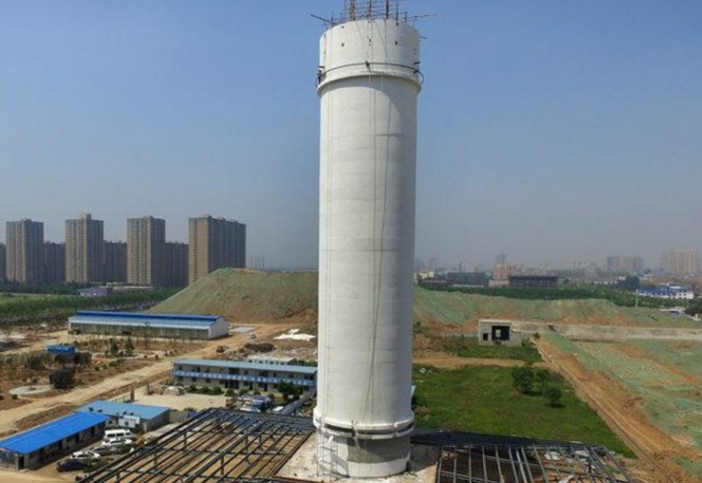China has built the ‘world’s largest air purifier’ to battle smog

China has created a giant air purifier in order to combat the amount of smog in the city of Xian. Image: REUTERS/Stringer
Scientists at China’s Institute of Earth Environment have constructed what they say is the world’s largest air purifier in the northern city of Xian.
The experimental smog-sucking tower stands at over 100 metres tall and is designed to improve air quality in the city, where standards regularly fall short of expectations set by the World Health Organization.
The tower has already brought a noticeable improvement in air quality across an area of 10 square kilometres, according to a report in the South China Morning Post.
Lead researcher Cao Junji says the tower is capable of producing more than 10 million cubic metres of clean air per day, adding that on severely polluted days smog is reduced to “moderate levels”.
To monitor the tower’s impact, Junji’s team placed pollution monitoring stations in the surrounding area, discovering that levels of PM2.5 – the fine particles in smog considered most harmful – fell 15% during times of heavy pollution, compared to average.
How it works
The system comprises a series of specially-adapted greenhouses situated at the base of the tower, which suck in polluted air and heat it using solar energy.
The air then rises through layers of cleaning filters before being released into the atmosphere. A full assessment of the tower’s performance is expected later this year, with the researchers hoping to build a fully-functioning tower around five times larger thereafter.
The Xian tower experiment is similar to the Smog Free Project, created by Dutch artist Daan Roosegaarde in 2016 as a means of purifying Beijing’s air.
That project consists of two parts. First, a seven-metre-tall tower sucks up polluted air, and cleans it at a nano-level. Second, the carbon from smog particles is turned into diamonds.
More smog towers are being produced for parks and playgrounds across China’s cities. Roosegaarde says air in these areas will be 70-75% cleaner than the rest of the city.
Clean future
This is particularly good news for a country that has notoriously high levels of air pollution.
China’s share of the global emissions mix jumped from 5.7% in 1973 to 28.1% in 2016. This is due largely to its unrivalled appetite for coal.
According to the latest Key World Energy Statistics report by the International Energy Agency, China was the world's largest producer and importer of coal in 2016.
And while China was not among the 20 countries that agreed to phase out coal by 2030 at last year’s COP23 climate talks, it is attempting to reduce its carbon footprint.
For example, China recently announced it would scrap plans to build 85 coal-fired plants.
And last year the country introduced anti-pollution measures across 28 cities. The plan, which includes curbing production in heavy industries, is designed to cut PM2.5 concentrations by at least 15% year-on-year.
China has also increased its investment in clean energy, from $7.5 billion in 2005 to more than $101 billion a decade later. This is in addition to investing $44 billion in overseas clean energy projects last year, according to the Institute for Energy Economics and Financial Analysis.
In comparison, the European Union invested $39.9 billion in clean energy in 2015.
Don't miss any update on this topic
Create a free account and access your personalized content collection with our latest publications and analyses.
License and Republishing
World Economic Forum articles may be republished in accordance with the Creative Commons Attribution-NonCommercial-NoDerivatives 4.0 International Public License, and in accordance with our Terms of Use.
The views expressed in this article are those of the author alone and not the World Economic Forum.
Stay up to date:
China
Forum Stories newsletter
Bringing you weekly curated insights and analysis on the global issues that matter.
More on Geographies in DepthSee all
Naoko Tochibayashi
October 30, 2025










